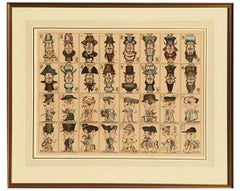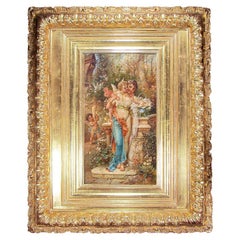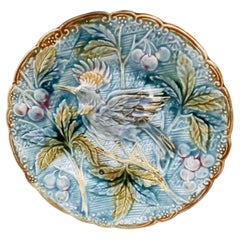19th Century Decorative Art
English Folk Art Antique 19th Century Decorative Art
Paper
English Folk Art Antique 19th Century Decorative Art
Paper
British Antique 19th Century Decorative Art
Paper
Austrian Belle Époque Antique 19th Century Decorative Art
Wood, Giltwood
Antique 19th Century Decorative Art
Paper
Belgian Rustic Antique 19th Century Decorative Art
Ceramic, Faience
French Antique 19th Century Decorative Art
Paper
English Victorian Antique 19th Century Decorative Art
Ceramic
Turkish Folk Art Antique 19th Century Decorative Art
Silk
Tajikistani Suzani Antique 19th Century Decorative Art
Silk
English Victorian Antique 19th Century Decorative Art
Ceramic
German Rustic Antique 19th Century Decorative Art
Antler, Wood
Antique 19th Century Decorative Art
Paper
French Rustic Antique 19th Century Decorative Art
Majolica, Ceramic, Faience
Japanese Antique 19th Century Decorative Art
Bronze
Antique 19th Century Decorative Art
Paper
Antique 19th Century Decorative Art
Paper
Belgian Rustic Antique 19th Century Decorative Art
Ceramic
Uzbek Suzani Antique 19th Century Decorative Art
Silk
French Country Antique 19th Century Decorative Art
Ceramic, Faience, Majolica
French Country Antique 19th Century Decorative Art
Ceramic, Faience, Majolica
English Victorian Antique 19th Century Decorative Art
Ceramic, Faience, Majolica
Scottish Folk Art Antique 19th Century Decorative Art
Paper
English Folk Art Antique 19th Century Decorative Art
Paper
Antique 19th Century Decorative Art
Paper
Scottish Folk Art Antique 19th Century Decorative Art
Paper
French Art Nouveau Antique 19th Century Decorative Art
Ceramic
American American Empire Antique 19th Century Decorative Art
Leather, Paint
Antique 19th Century Decorative Art
Paper
Spanish Colonial Antique 19th Century Decorative Art
Iron
French Art Nouveau Antique 19th Century Decorative Art
Ceramic
Antique 19th Century Decorative Art
Paper
English Gothic Antique 19th Century Decorative Art
Paper
English Romantic Antique 19th Century Decorative Art
Paper
English Folk Art Antique 19th Century Decorative Art
Paper
English Gothic Antique 19th Century Decorative Art
Paper
French Rustic Antique 19th Century Decorative Art
Ceramic
British Antique 19th Century Decorative Art
Wood
French Country Antique 19th Century Decorative Art
Ceramic
English Gothic Antique 19th Century Decorative Art
Paper
French Baroque Antique 19th Century Decorative Art
Bone, Silk, Paint
English Chinoiserie Antique 19th Century Decorative Art
Ceramic
English Folk Art Antique 19th Century Decorative Art
Paper
Belgian Rustic Antique 19th Century Decorative Art
Ceramic
Belgian Rustic Antique 19th Century Decorative Art
Ceramic
French French Provincial Antique 19th Century Decorative Art
Ceramic
French Victorian Antique 19th Century Decorative Art
Ceramic, Faience
French Victorian Antique 19th Century Decorative Art
Ceramic
German Country Antique 19th Century Decorative Art
Ceramic
Victorian Antique 19th Century Decorative Art
Glass, Wood
English Gothic Antique 19th Century Decorative Art
Paper
German Mid-Century Modern Antique 19th Century Decorative Art
Wood, Paper
French Aesthetic Movement Antique 19th Century Decorative Art
Ceramic, Majolica
French French Provincial Antique 19th Century Decorative Art
Ceramic
English Late Victorian Antique 19th Century Decorative Art
Canvas, Wood, Giltwood
French Rococo Antique 19th Century Decorative Art
Masonite, Gesso, Canvas, Giltwood
German Baroque Antique 19th Century Decorative Art
Gesso, Canvas, Wood
French Art Nouveau Antique 19th Century Decorative Art
Ceramic
Antique 19th Century Decorative Art
Paper
Papua New Guinean Primitive Antique 19th Century Decorative Art
Wood, Paint
Read More
At Colonial Williamsburg, Everything Old Is New Again
With the help of a new director, the Virginia institution's folk art and decorative arts museums are undergoing extensive upgrades.
New York’s Hirschl & Adler Showcases the American Workmanship and Design Panache of Neoclassical Treasures
The gallery's latest exhibition proves that museum-quality pieces entice and inspire, whether in traditional or more modern interiors.





